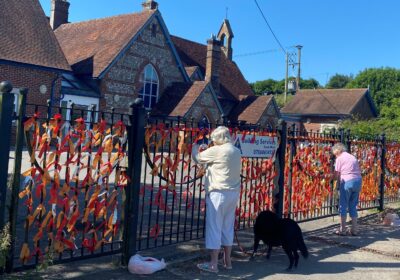THE correspondent in the letter ‘How much housing is enough in the Blackmore Vale?’ correctly identifies a number of the elements of this complex problem.
It is certainly true that too many new housing schemes come without the infrastructure you would think any fool could see was necessary – school and health provision and adequate roads being among the most obvious.
A lot of this boils down to two things – the role of landowners who make the land available without which the developments couldn’t take place, and the greed of the big developers determined to maximise their profits, irrespective of the needs of the community.
As your correspondent says, these developers know that if they put in inflated schemes they will eventually get their way because councils can’t or won’t stand up to them.
Developers pretend to sugar the pill by including what looks like a helpful amount of affordable housing, then once they have their planning consent they come back and say that they find they can’t after all afford all that affordable housing.
And the councils let them get away with it, not least because these big developers can afford the expensive planning lawyers that the councils can’t.
Then there is the design side of the equation. In recent years a small number of big national developers have progressively squeezed out the smaller local ones.
It is the smaller local ones who are familiar with local building traditions and materials, and can make their developments fit in visually.
READ MORE: LETTER: ‘How much housing is enough in the Blackmore Vale?’
WANT TO WRITE? Click here to submit your letter
The big boys have no interest in this – if you consider that one of the best known has a profit margin of 30%, it is no surprise that they come up with schemes that could be almost anywhere in the country. No wonder this turns many people into ‘Nimbys’.
The contrast can be seen very well by comparing two developments in Sherborne – the excellent Fosters Fields scheme by Dorset firm CG Fry and that on the opposite side of town by Persimmon, which in my view is seriously deficient in almost every respect.
The land for both those developments was made available by Sherborne Castle Estates, which is said to own more than 90% of developable land in and around Sherborne.
Such landowners cannot evade the fact they have a clear social responsibilty to local communities – it is not enough in this day and age for them to simply sell the land and wash their hands of the results.
As the Prince’s Foundation, set up by our present King, has been urging, landowners need to be more proactive in this respect. As has been shown, in the long term this produces not only more visually and socially acceptable results but also a better financial return for the landowner. It also helps overcome the entirely understandable reaction people have against the prospect of a new development in their town or village.
As for affordable housing, built for people with a demonstrable local link rather than for yet more incomers from London, the surest way forward may be the community land trust.
Sherborne Castle Estates could certainly help burnish its local reputation by making land available for precisely this purpose.
ROGER WHITE
Sherborne










Leave a Reply